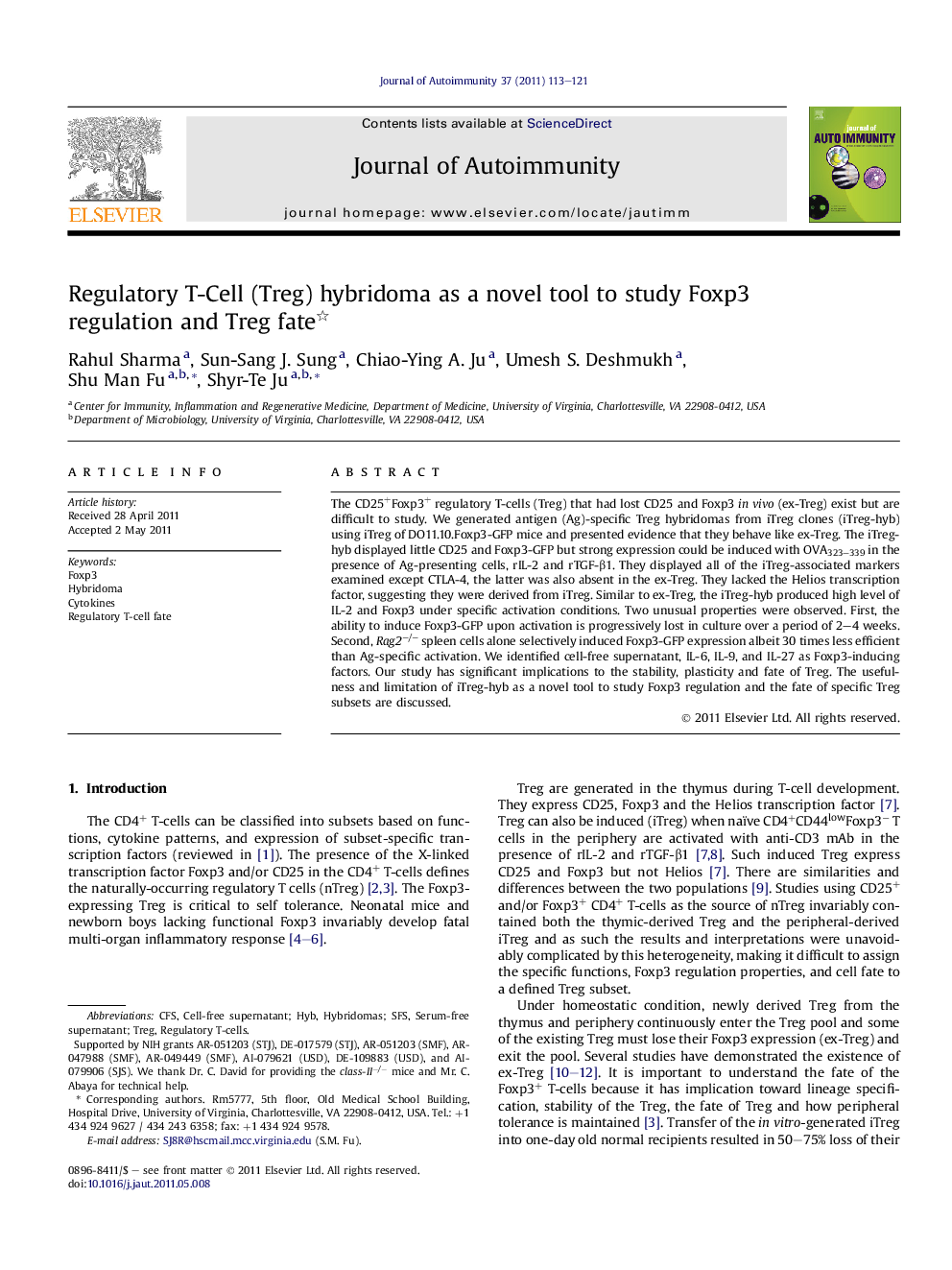| Article ID | Journal | Published Year | Pages | File Type |
|---|---|---|---|---|
| 3367969 | Journal of Autoimmunity | 2011 | 9 Pages |
The CD25+Foxp3+ regulatory T-cells (Treg) that had lost CD25 and Foxp3 in vivo (ex-Treg) exist but are difficult to study. We generated antigen (Ag)-specific Treg hybridomas from iTreg clones (iTreg-hyb) using iTreg of DO11.10.Foxp3-GFP mice and presented evidence that they behave like ex-Treg. The iTreg-hyb displayed little CD25 and Foxp3-GFP but strong expression could be induced with OVA323–339 in the presence of Ag-presenting cells, rIL-2 and rTGF-β1. They displayed all of the iTreg-associated markers examined except CTLA-4, the latter was also absent in the ex-Treg. They lacked the Helios transcription factor, suggesting they were derived from iTreg. Similar to ex-Treg, the iTreg-hyb produced high level of IL-2 and Foxp3 under specific activation conditions. Two unusual properties were observed. First, the ability to induce Foxp3-GFP upon activation is progressively lost in culture over a period of 2–4 weeks. Second, Rag2−/− spleen cells alone selectively induced Foxp3-GFP expression albeit 30 times less efficient than Ag-specific activation. We identified cell-free supernatant, IL-6, IL-9, and IL-27 as Foxp3-inducing factors. Our study has significant implications to the stability, plasticity and fate of Treg. The usefulness and limitation of iTreg-hyb as a novel tool to study Foxp3 regulation and the fate of specific Treg subsets are discussed.
